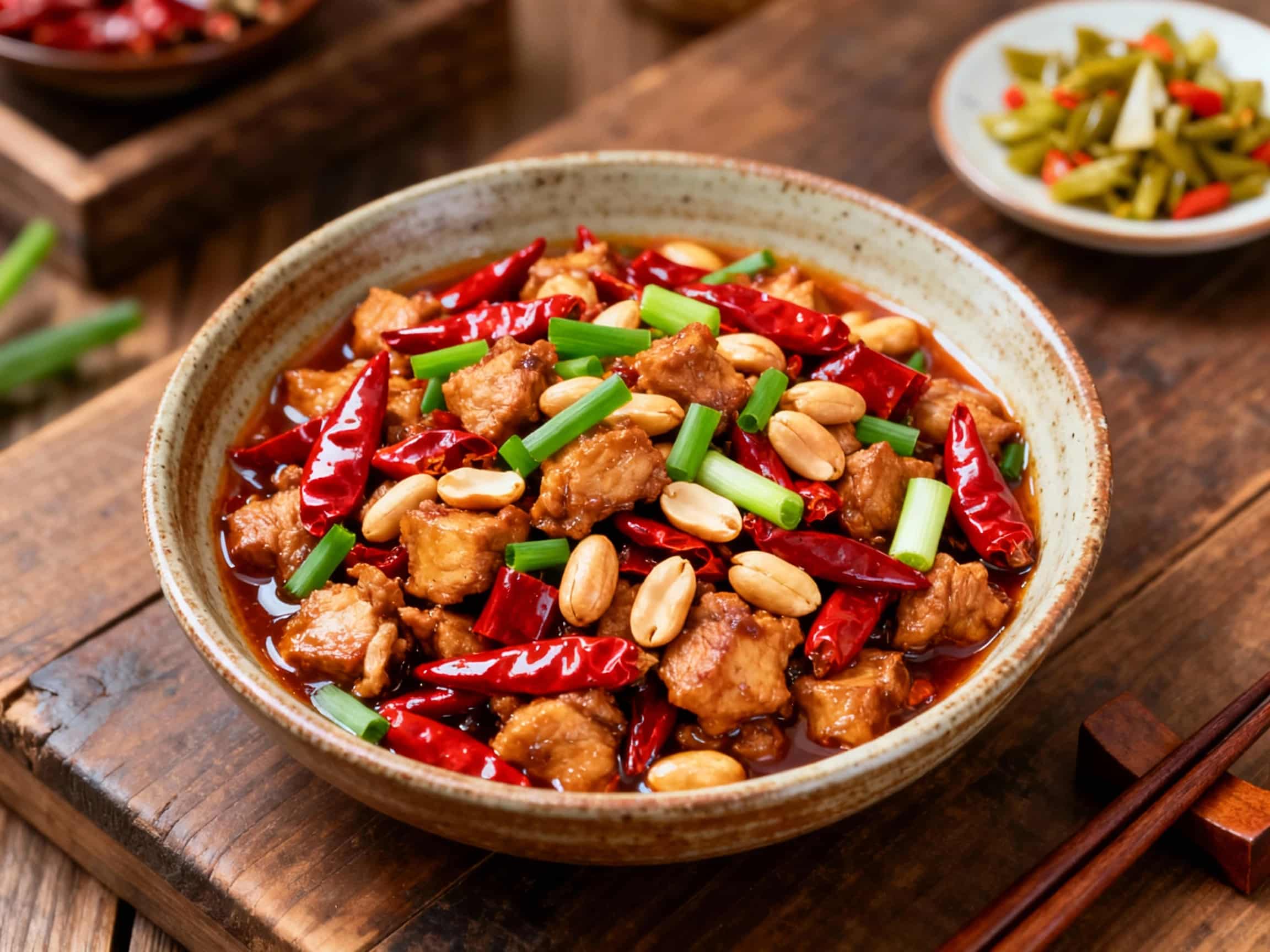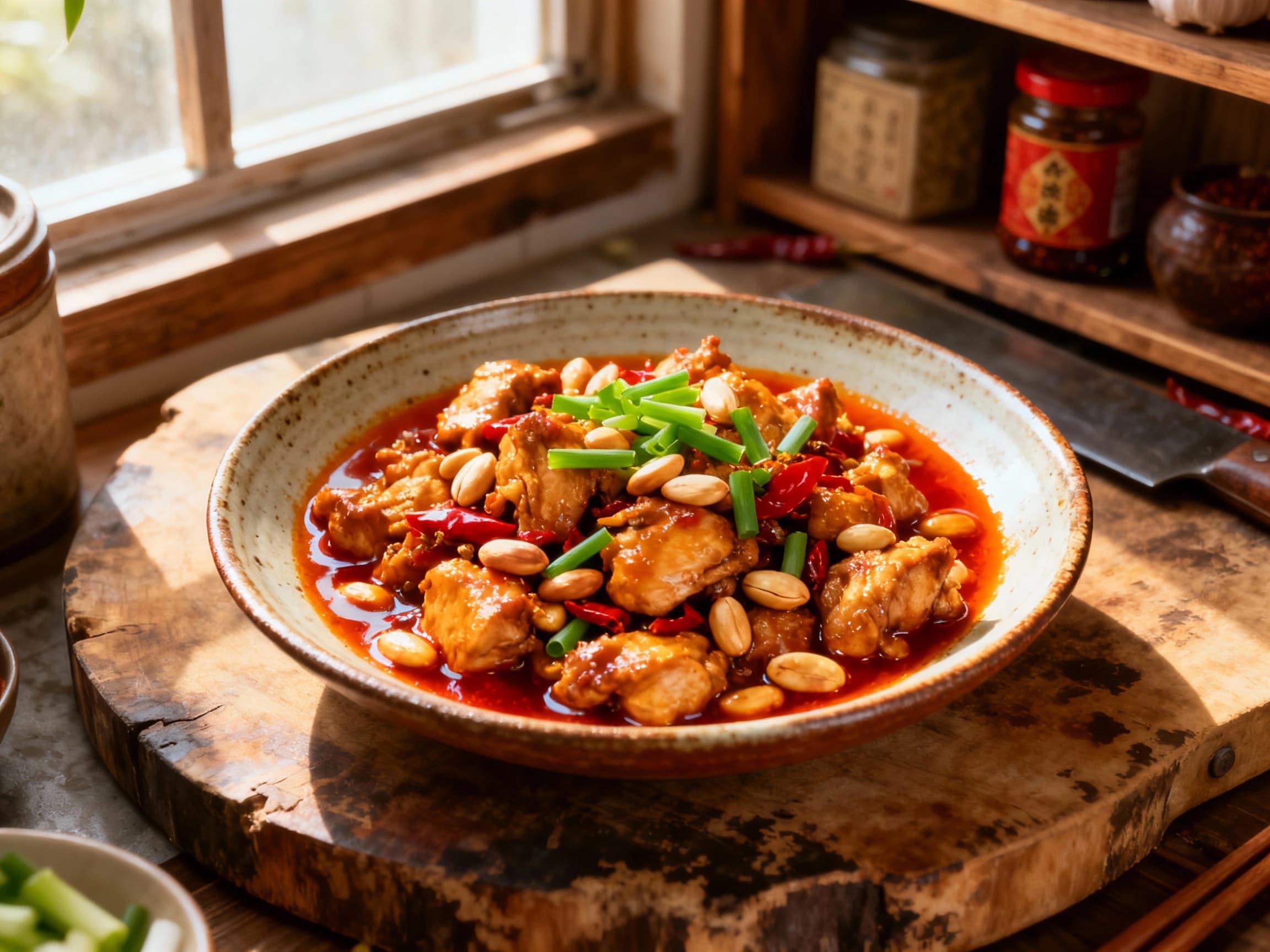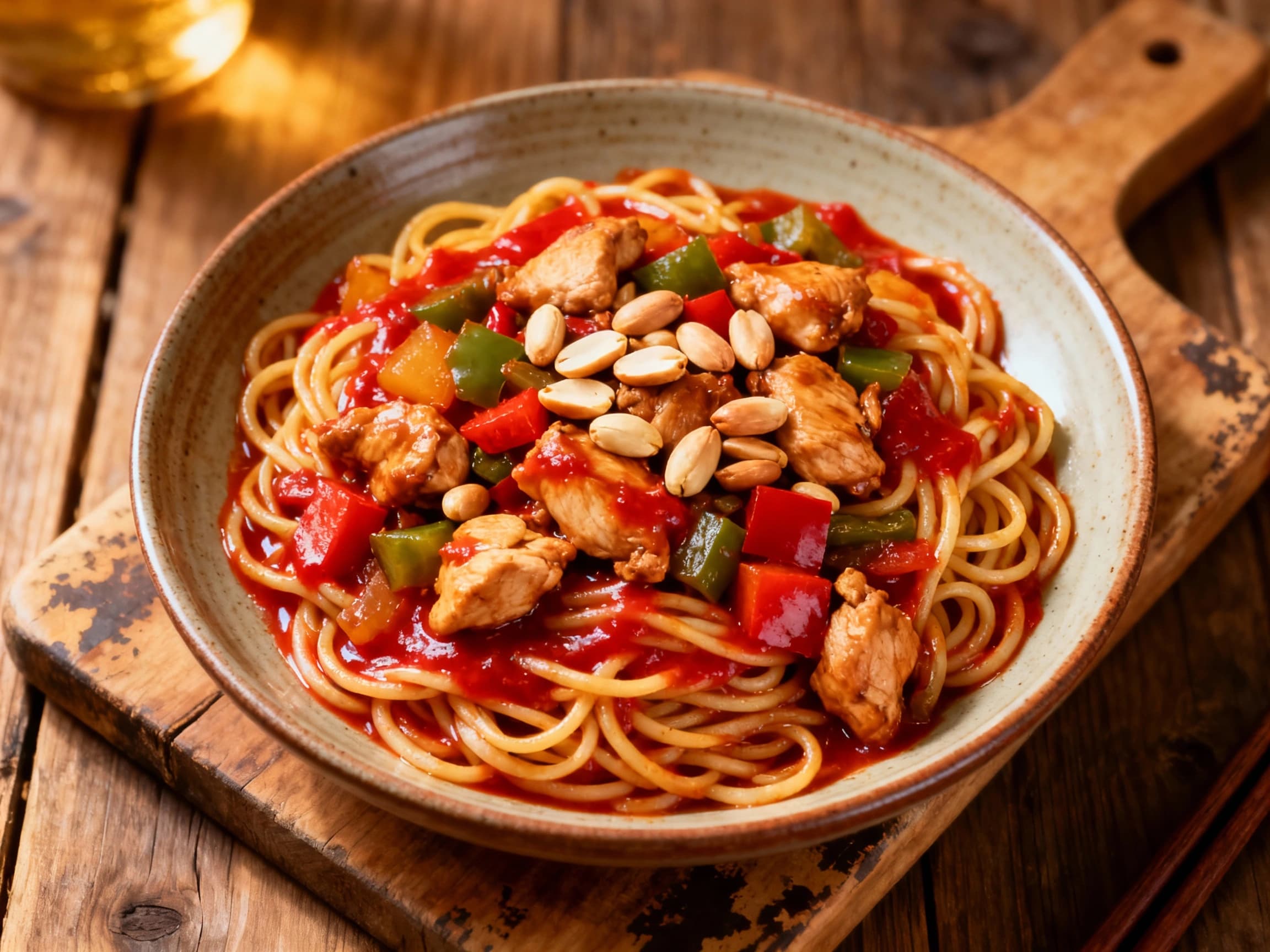
Kung Pao Chicken
宫保鸡丁
- Country
- China
- Region
- Sichuan
- Recipes
- 3 Recipes
Dish information
Kung Pao Chicken, or Gong Bao Ji Ding (宫保鸡丁), is a quintessential Sichuan dish celebrated globally for its complex flavor profile and tantalizing texture. Its origins are traced back to the late 19th century during the Qing Dynasty, attributed to Ding Baozhen, a Sichuanese official who served as Governor-General of Sichuan and Tutor of the Crown Prince. He was posthumously honored with the title 'Kung Pao,' hence the dish's name. The dish exemplifies the core principles of Sichuanese cooking: the balance of mala (numbing and spicy), savory, and slightly sweet notes. Key ingredients include tender diced chicken, roasted peanuts for crunch, dried chilies for heat, and Sichuan peppercorns for their distinctive tingling sensation. While traditional recipes emphasize fiery Sichuan flavors, adaptations worldwide often moderate the spice level and incorporate other vegetables. The dish has become ubiquitous in Chinese restaurants across the globe, a testament to its enduring popularity and adaptability, making it a symbol of Chinese culinary diplomacy. Major cities like Chengdu, the capital of Sichuan province, are renowned for their authentic renditions, where the dish is perfected in traditional eateries and street-side stalls alike.
Timeline
Origin attributed to Ding Baozhen, Governor-General of Sichuan, during the late Qing Dynasty.
The dish gains popularity within Sichuan province and begins to spread.
Enters the culinary repertoire of wider China and Chinese restaurants abroad.
Becomes a globally recognized Sichuanese dish, with numerous variations emerging.
Culinary tourism to Sichuan increases interest in authentic Gong Bao Ji Ding.


